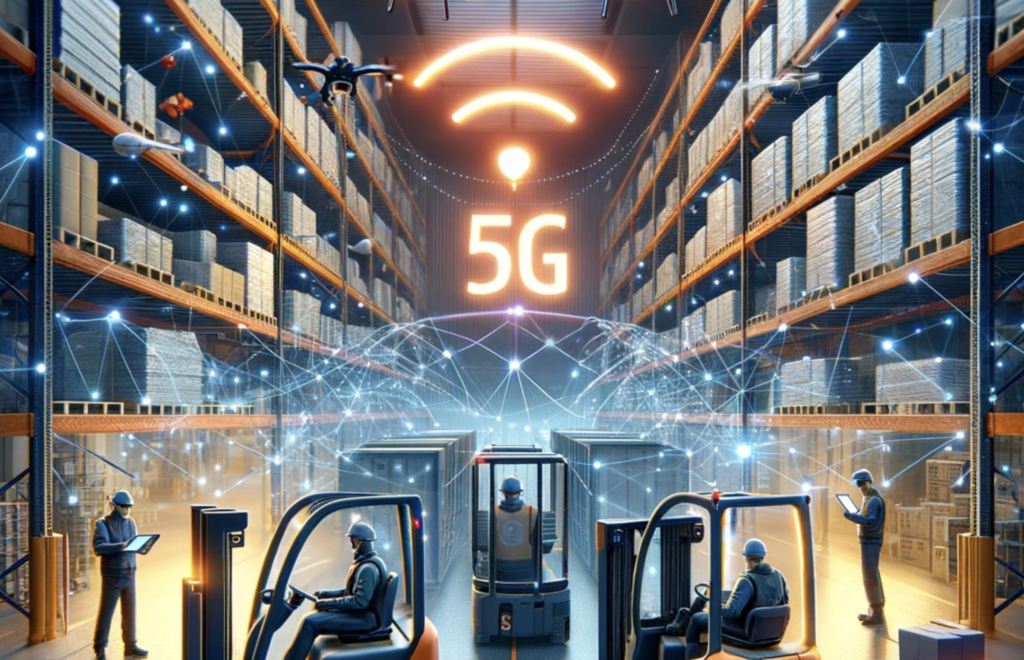

In an era where efficiency is paramount and the seamless flow of goods is essential, the logistics sector is poised for a significant transformation. This impending revolution is fueled by the advent of the fifth generation of wireless technology – 5G. This breakthrough promises not just to enhance current logistics operations but to completely redefine them, introducing unprecedented levels of efficiency and reliability.
The integration of 5G into logistics is set to streamline and innovate operations with its superior speeds and minimal latency. This technological leap enables real-time data exchange, empowering Internet of Things (IoT) devices and significantly advancing automation capabilities. For logistics professionals and businesses reliant on the timely movement of goods, this evolution is a game changer.
The advent of 5G introduces a new era in logistics operations tracking and monitoring. Capable of supporting a vast array of devices simultaneously, 5G enables continuous communication among sensors and smart tags. This constant flow of data ensures unparalleled accuracy in shipment tracking, real-time updates on transport conditions, and immediate alerts regarding potential delays or issues. Consider, for instance, the application of RFID tags and GPS sensors enhanced by 5G. These technologies can offer granular visibility into a product’s journey, allowing companies to track not just the position of their goods, but also their condition. For sensitive shipments like pharmaceuticals, this means being able to monitor temperature and humidity in real-time, ensuring that the products remain within safe parameters throughout their transit.
5G also brings to life the potential of smart containers in international shipping. These containers, equipped with IoT devices, can communicate detailed information about their contents, weight, and internal conditions. Moreover, in large-scale warehousing operations, 5G can enhance the use of automated guided vehicles (AGVs) and drones for inventory management. These autonomous systems rely on constant data exchange to navigate warehouses, manage stock, and prepare orders. With 5G, the communication between these devices and the central management system becomes seamless, significantly reducing the risk of errors and delays.
Envision a future where fleets of autonomous trucks navigate across continents with precision, guided by a sophisticated network designed to optimize routes and prevent incidents. Or drones seamlessly traversing urban landscapes, delivering parcels directly to consumers in densely populated areas. These scenarios, once considered futuristic, are becoming feasible through 5G. Its low latency and high reliability are key to the safe and efficient operation of autonomous vehicles and drones.
The integration of 5G technology in warehouses heralds a new era of efficiency and precision in logistics. With its high-speed data transfer and minimal latency, 5G enables advanced robotics and IoT devices to perform inventory management, sorting, and order packing with unprecedented coordination, significantly reducing errors. Augmented Reality (AR) glasses, powered by 5G, provide human workers with real time guidance, streamlining processes and minimizing mistakes.
5G’s impact extends to enhancing data visibility, allowing for real-time insights into inventory levels and operational statuses. This seamless data flow is crucial for informed decision-making and effective resource management. The connectivity between 5G-enabled hardware and Warehouse Management Systems (WMS) creates a synchronized ecosystem, optimizing operations through predictive analytics and automated reordering. This interconnectedness ensures a responsive, agile warehouse environment capable of adapting to dynamic demands, marking a transformative step in logistics efficiency.
5G fosters unparalleled interconnectivity, not just among devices but across the entire logistics chain, ensuring smooth interactions between manufacturers, warehouses, carriers, and consumers. Edge computing, working in conjunction with 5G networks, enables data processing closer to its source, thereby reducing response times and facilitating swift decision-making.
5G has the potential to drive sustainability in logistics. Improved accuracy in route planning and the autonomy of vehicles can lead to significant reductions in fuel consumption and, consequently, emissions. Furthermore, enhanced efficiency in logistics operations can minimize waste throughout the supply chain, highlighting the environmental benefits of 5G.
As the logistics industry stands on the brink of a 5G-driven revolution, businesses must prepare themselves for the transformative changes that this advanced technology will bring. The shift to a 5G-powered logistics system promises unprecedented efficiency and agility, but it also requires careful planning, investment, and adaptation to new challenges. Here’s how logistics professionals can gear up for this impending shift:
For those in the logistics sector, 5G represents not just an advancement in mobile connectivity but a beacon of innovation that will redefine the industry. Embracing 5G technology entails a readiness to adapt, invest, and transform, all while maintaining a vigilant stance on the integrity and security of logistics operations. As we stand on the brink of this technological evolution, the question for logistics professionals is not if they will adopt 5G, but when and how. The journey toward a smarter, more agile, and more sustainable logistics network has commenced. The imperative now is whether your business will spearhead this movement or be left playing catch-up. Remember, the future waits for no one; it’s racing ahead, propelled by 5G.